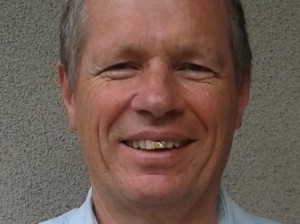Yesterday I listened to RNZ's political commentators. The principal topic was an aspect of the recently released May 2025 international migration. Kathryn Ryan starts by reminding us of the "old saying, would the last person to leave New Zealand please turn out the lights" (a saying which has been used in places other than Godzone).
The latest figure for net immigration was an inflow of 14,800; a net gain. But you wouldn't have realised this. Ryan went on to say there's a big migration outflow underway right now. And she's correct if you only count New Zealand citizens. (Non-NZ citizens are people too; indeed, in that timeframe, 53,400 non-NZ citizens emigrated!)
Kathryn Ryan said there was a net loss of 30,000. There was actually a (provisional) net loss of 46,300 NZ citizens. (Possibly she – or her producer – had subtracted the all-migrant net inflow from the net loss of New Zealand citizens, having interpreted the overall 14,800 net inflow as a net inflow of non-NZ citizens.) In fact, this 46,300 net loss of NZ citizens was offset by a net gain of 61,100 non-NZ citizens.
(We should also note that total arrivals – not just people classified as 'immigrants' – in the year to May 2025 exceeded total departures by 3,797; less than the 14,800 ascribed to net international migration. The sum of total net arrivals in the six years to May 2025 was 244,000; an average of 40,000 per year.)
The total number of people who featured (in the period from June 2024 to May 2025) as either immigrants or emigrants was 264,000; that is, a number of people equivalent to five percent of New Zealand's total population featured as either a permanent arrival or a permanent departure. This 264,000 includes 114,500 "migrant arrivals of non-NZ citizens". Half of the 114,500 estimated permanent arrivals of non-NZ citizens were citizens of either India, China, Philippines or Sri Lanka.
In addition to getting the numbers wrong, a key problem with the framing of the RNZ migration discussion is that it rendered invisible these citizens of Asian countries; as people of Asian birth have been largely invisible in our intense discussions in recent years on binationalism. This gaze aversion by the political class is a kind of passive or casual racism. It is ethnicism to simply ignore the new New Zealanders who provide so much of our labour, and who generally perform their labour roles with professionalism and competence.
An important aspect of this problem is to ignore the 'mammoth in the room', that there is in Aotearoa New Zealand a substantial substitution of New Zealand born residents for non-New Zealand born residents; white citizens are leaving, brown denizens are arriving. In these latest statistics, for the year to May, there were 61,100 more new New Zealanders and 46,300 fewer old New Zealanders; 61,100 minus -46,300 equals 107,400. 100,000 is two percent of five million.
So, if 70% of New Zealand residents were NZ-born in May 2024, then about 68% of New Zealand residents will have been NZ-born in May 2025. (Just under 30 percent of New Zealanders were born overseas in March 2023, according to Statistics New Zealand.) The rate of 'replacement' is probably not quite that great, in that some of the citizens leaving permanently will have been naturalised rather than born in Aotearoa New Zealand. Another complicating factor is natural population growth – the excess of births over deaths – which was just over 20,000 in 2024. It would appear that about one-third of births in New Zealand (maybe more) are to mothers not themselves born in New Zealand.
Population 'Replacement' is a sensitive subject. The 'far right' in much of the Eurocentric world indulges in 'replacement theory', a conspiracy theory that there is a liberal "elite" (sometimes "Jewish") agenda to replace 'whites' with 'non-whites'. (There used to be a comparable case on the 'far-left', whereby 'globalisation' was interpreted as an agenda rather than a description.) The descriptive reality of today's world is that there are disproportionately more – and substantially so – 'brown' and 'black' young people than their proportion among older age cohorts.
White people are diminishing, and non-white people are increasing in numbers. That's not a problem. But it is perceived as a problem by many white people, especially disadvantaged white people in the economically polarised Euro world. If we tip-toe around this issue of changing global ethnic proportions, we leave the field to 'replacement theory' conspiracy theorists. We need to have adult conversations about the implications not just of aging populations, but also the re-culturation of our populations through demographic change.
Applying this last matter to Aotearoa New Zealand, a nation state with rapid population turnover, the overall national 'personality' can be largely retained so long as immigrants come from a wide range of other countries. When I was in Sydney last year, I heard a story about the emergence of India's 'caste system' in Australia. This is the kind of cultural change that we do not want in New Zealand; such cultural colonisation can be averted by avoiding too much immigration from a single country. And through a process of cultural fusion, rather than either assimilation or the emergence of cultural silos.
Keith Rankin (keith at rankin dot nz), trained as an economic historian, is a retired lecturer in Economics and Statistics. He lives in Auckland, New Zealand.



 Eugene Doyle: Vive La Resistance! The Heroes Who Oppose Genocide
Eugene Doyle: Vive La Resistance! The Heroes Who Oppose Genocide Martin LeFevre - Meditations: Humans Haven’t Changed In 45,000 Years. We Can Now
Martin LeFevre - Meditations: Humans Haven’t Changed In 45,000 Years. We Can Now Gordon Campbell: On Why The Regulatory Standards Bill Is A Hot Mess
Gordon Campbell: On Why The Regulatory Standards Bill Is A Hot Mess Ian Powell: Who Benefits From Outsourcing Planned Surgery - Follow The Funding
Ian Powell: Who Benefits From Outsourcing Planned Surgery - Follow The Funding Richard S. Ehrlich: Three Different Prime Ministers In One Week
Richard S. Ehrlich: Three Different Prime Ministers In One Week Ramzy Baroud: The 'Economy Of Genocide' Report - A Reckoning Beyond Rhetoric
Ramzy Baroud: The 'Economy Of Genocide' Report - A Reckoning Beyond Rhetoric